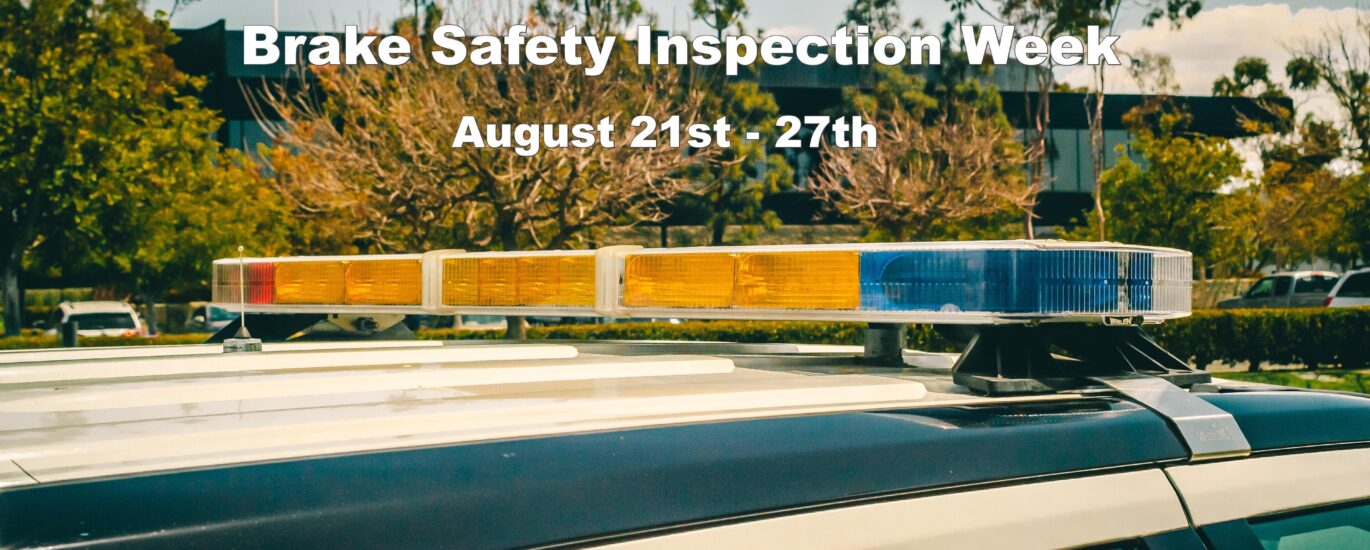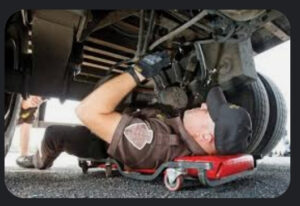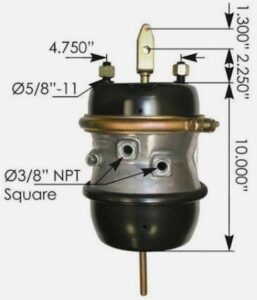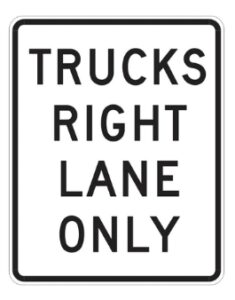



The annual Brake Safety Week inspection, enforcement, and education campaign will take place from August 21–27, according to a statement
released on Tuesday by the Commercial Vehicle Safety Alliance.
 Inspectors will carry out their typical Level I and V North American Standard Inspections during Brake Safety Week and collect and submit brake-related data to CVSA. The outcomes will be made public in the autumn.
Inspectors will carry out their typical Level I and V North American Standard Inspections during Brake Safety Week and collect and submit brake-related data to CVSA. The outcomes will be made public in the autumn.
Inspectors will record and report data on brake hose/tubing chafing violations, which is the emphasis of this year’s Brake Safety Week, in addition to overall inspections and out-of-service infractions involving brakes. According to CVSA President Capt. John Broers of the South Dakota Highway Patrol, “poorly maintained brake systems can diminish the braking power and stopping distance of heavy trucks and motor coaches, which poses a severe risk to the driver and public safety.” “The effective operation of the brake systems on large commercial motor vehicles is vital in certain split-second emergency scenarios.”
The Commercial Vehicle Safety Alliance (CVSA) is a nonprofit organization comprised of local, state, provincial, territorial, and federal
commercial motor vehicle safety officials and industry representatives. The Alliance aims to prevent commercial motor vehicle crashes, injuries, and fatalities and believes that collaboration between government and industry improves road safety and saves lives.
 According to the three-day national brake-check data from last year, brake systems and brake adjustment violations accounted for 38.9% of all vehicle out-of-service violations, the highest percentage of any category of vehicle violations. Brake-related violations make up the majority of all out-of-service vehicle violations cited during roadside inspections. The CVSA’s Brake Safety Week aims to remedy this by:
According to the three-day national brake-check data from last year, brake systems and brake adjustment violations accounted for 38.9% of all vehicle out-of-service violations, the highest percentage of any category of vehicle violations. Brake-related violations make up the majority of all out-of-service vehicle violations cited during roadside inspections. The CVSA’s Brake Safety Week aims to remedy this by:
 Inspectors will search for missing, broken, loose, contaminated, or cracked parts on the brake system, as well as non-manufactured holes (such as rust holes and holes caused by rubbing or friction), as well as broken springs in the spring brake housing section of the parking brake, during the brake portion of a vehicle inspection. Additionally, they will check that the air system maintains air pressure between 90 and 100 psi and listen for audible air leaks around brake parts and lines (620-690 kPa).
Inspectors will search for missing, broken, loose, contaminated, or cracked parts on the brake system, as well as non-manufactured holes (such as rust holes and holes caused by rubbing or friction), as well as broken springs in the spring brake housing section of the parking brake, during the brake portion of a vehicle inspection. Additionally, they will check that the air system maintains air pressure between 90 and 100 psi and listen for audible air leaks around brake parts and lines (620-690 kPa).
Additionally, inspectors will measure pushrod travel and look for S-cam flip-over. They will make sure the air chambers on each axle are the same size and that the slack adjusters are the same length (from the center of the S-cam to the center of the clevis pin). Additionally, they will check any necessary warning lights for the brake system, such as the low air pressure and ABS malfunction bulbs. Additionally, inspectors will check the tractor protection system, including the bleed-back system on the trailer, and make sure the breakaway mechanism on the trailer is functional.
Local governments have been strongly cautioned by the US Interagency Council on Homelessness not to pass laws criminalizing homelessness since they do not promote access to resources, disadvantage service providers, and erect new hurdles for homeless persons.
Federally mandated in all states, trucks must use Right Lanes.
 The Department of Public Safety is putting up new signs that will limit heavy vehicle truck traffic on this congested section of the highway to the right lane only in order to improve safety on Americas highways.
The Department of Public Safety is putting up new signs that will limit heavy vehicle truck traffic on this congested section of the highway to the right lane only in order to improve safety on Americas highways.
Safety concerns have been brought about by truck traffic and heavy traffic flow. According to data for the area where the signs are being
placed, big trucks were involved in 15% of rear-end and sideswipe collisions and 20% of total collisions.
 The signs are meant to remain up until the start of a construction project to widen this section of I-10. After the necessary environmental evaluation and permission, the replacement of the bridges that cross the Gila River is anticipated to be the first stage in 2023. Additionally, ADOT is collaborating closely with the Maricopa Association of Governments and the Gila River Indian Community to pursue federal financing to supplement the committed state funding for the project, which may start as early as 2026.
The signs are meant to remain up until the start of a construction project to widen this section of I-10. After the necessary environmental evaluation and permission, the replacement of the bridges that cross the Gila River is anticipated to be the first stage in 2023. Additionally, ADOT is collaborating closely with the Maricopa Association of Governments and the Gila River Indian Community to pursue federal financing to supplement the committed state funding for the project, which may start as early as 2026.
We here at Fr8 World Logi$tix would like to encourage our Professional Truck Drivers and Operators to be prepared, courteous and
friendly at checkpoints, weigh stations, and the occasional roadside stop – the enforcement officers will appreciate it and you’ll be glad you
did!
From all of us at Fr8 World Logi$tix, thank YOU for reading.
To learn more, visit https://fr8worldlogistix.com/.
Written by: Fr8 World Logi$tix.